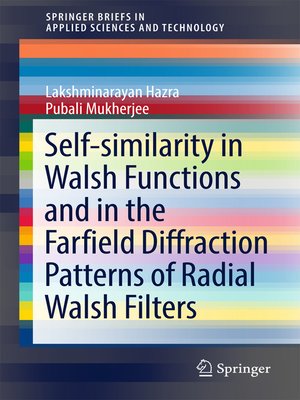Self-similarity in Walsh Functions and in the Farfield Diffraction Patterns of Radial Walsh Filters
ebook ∣ SpringerBriefs in Applied Sciences and Technology
By Lakshminarayan Hazra

Sign up to save your library
With an OverDrive account, you can save your favorite libraries for at-a-glance information about availability. Find out more about OverDrive accounts.
Find this title in Libby, the library reading app by OverDrive.



Search for a digital library with this title
Title found at these libraries:
| Library Name | Distance |
|---|---|
| Loading... |
The book explains the classification of a set of Walsh functions into distinct self-similar groups and subgroups, where the members of each subgroup possess distinct self-similar structures. The observations on self-similarity presented provide valuable clues to tackling the inverse problem of synthesis of phase filters. Self-similarity is observed in the far-field diffraction patterns of the corresponding self-similar filters.
Walsh functions form a closed set of orthogonal functions over a prespecified interval, each function taking merely one constant value (either +1 or −1) in each of a finite number of subintervals into which the entire interval is divided. The order of a Walsh function is equal to the number of zero crossings within the interval. Walsh functions are extensively used in communication theory and microwave engineering, as well as in the field of digital signal processing. Walsh filters, derived from the Walsh functions, have opened up new vistas. They take on values, either 0 or π phase, corresponding to +1 or -1 of the Walsh function value.






